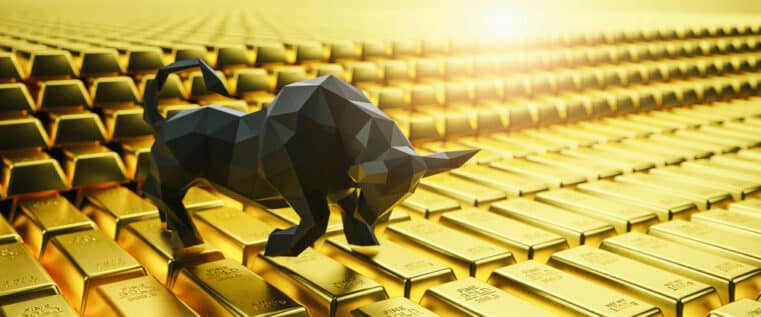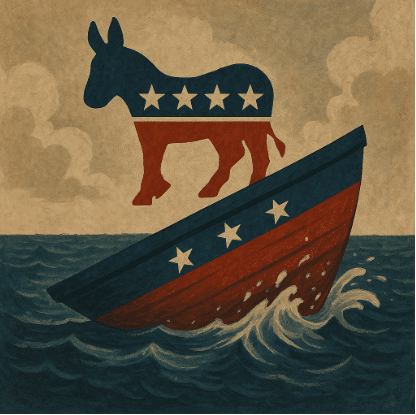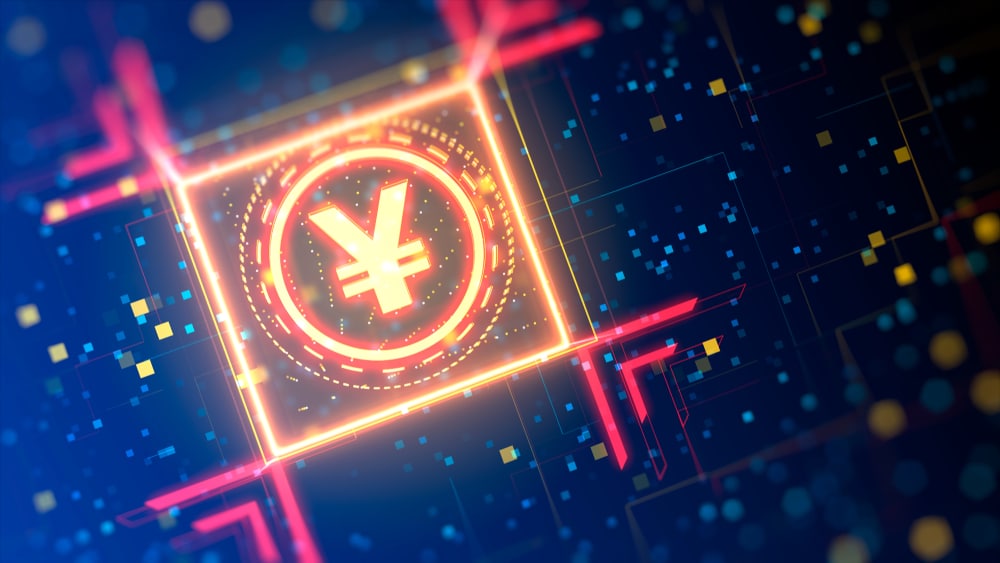
What is a Clad Coin? Pure Silver vs Clad
From the 1920s to 1964, the jingle jangle of pocket change sounded different in America. It even felt different. When you pulled out a few quarters to pay for a soda, you were paying with real silver coins made from 90 percent silver and 10 percent copper.
Thanks to increasing demand for silver and changing economic conditions, these silver coins were highly desired. So much that people began hoarding everyday pocket change with the hopes of turning a profit.
In 1964, however, the U.S. Mint decided that it was no longer economically feasible to continue issuing American coinage with a silver content of up to 90%. It would be the final year 90 percent silver coins were minted. The spot price of silver was just too close to the denomination of the coins being produced. Instead of spending their pocket change, people were stockpiling it.
In 1965, President Lyndon B. Johnson changed the course of American coinage. He signed the Coinage Act of 1965 on July 23 and in his remarks at the ceremonial signing of the Act, he explained “The new dimes and the new quarters will contain no silver. They will be campsites, with faces of the same alloy used in our 5-cent piece that is bonded to a core of pure copper. They will show a copper edge...Now, all of you know these changes are necessary for a very simple reason - silver is a scarce material. Our uses of silver are growing as our population and our economy grows. The hard fact is that silver consumption is now more than double new silver production each year. So, in the face of this worldwide shortage of silver, and our rapidly growing need for coins, the only really prudent course was to reduce our dependence upon silver for making our coins.”
With that, the U.S. Mint began production and circulating clad coins - silver-colored coins with absolutely no silver in them.
Clad Coins vs Silver Coins
What is a clad coin? Clad coins have multiple layers of a silver-colored, nickel-copper alloy. A clad coin is essentially a piece of copper sandwiched between two layers of nickel and zinc. It’s the metal composition you’ll find in your pocket change today. So while a clad coin may look shiny and silver, it doesn’t contain an ounce of silver.
So, did the introduction of silvery clad coins mean the end of fine silver coins? Far from it. Circulating silver coinage may have seen its last day, but pure silver bullion coins have been minted for saving - not spending - since the 1980s.
Mexico was the first nation to issue a silver bullion coin, the Libertad, in 1982. The Libertad was followed shortly after by the Silver American Eagle in 1986 and the Silver Canadian Maple Leaf in 1988. In 1989, China hopped on the silver bandwagon with the Silver Chinese Panda Coin.
These pure silver bullion coins were minted as legal tender, but with the intent, they would be held onto, not spent. They were meant to satiate citizens’ desire for pure, powerful silver. The silver coins that circulated in American coinage were never made with the same silver content as silver bullion coins - .999 pure silver.
How can you tell the difference between a silvery clad coin and a silver coin? Compare the coin types and you’ll see that it’s pretty obvious.
- Coin Weight: Given their greater silver content, silver bullion coins and previously circulated silver coins feel much heavier than clad coins.
- Coin Appearance Over Time: Silver coins will tarnish if left exposed to open air or moisture. Clad coins will develop a coppery tint as they age.
- Coin Edges: To identify a clad coin, look at its edge. This part of a coin is also called its “third edge.” You’ll see a distinct, copper-colored core. A pure silver coin will not have a visible core.
- Coin Sound: Silver coins and clad coins also make different noises when knocked or dropped - two things we certainly don't recommend doing. Take our word for it: the silver coins have a higher-pitched, ting-tang ring to them. Non-silver coins and silver-colored clad coins make more of a dull thud sound.
Shopping For Silver Coins
Whether you’re shopping for new silver coins or simply reevaluating your current collection, you’ll find it helpful to know the difference between pure silver coins and silver-colored clad coins. Contrary to popular belief, all that shines isn’t silver or gold for that matter. Without an ounce of silver content, clad coins do not offer the same benefits as silver bullion coins. Take Silver American Eagles, for instance.
Silver American Eagles can act as building blocks for your precious metals portfolio by increasing your portfolio’s diversity, as silver can move independently of stocks and other asset classes. Silver bullion coins represent tangible wealth.
What To Know About The Coinage Act of 1965
In the early 1960s, the U.S. faced a dwindling supply of silver that threatened to elevate the demand of coins such as the dime and quarter - coins that at the time contained actual silver - beyond their face value. The Coinage Act of 1965 aimed to address this shortage.
This silver shortage spurred people to hoard significant amounts of dimes and quarters. Some even melted the coins to produce silver bullion.
In response, President Lyndon B. Johnson wrote a special message to Congress proposing changes to the coinage system: “We must take steps to maintain an adequate supply of coins,” wrote Johnson, “or face chaos in the myriad transactions of our daily life - from using pay telephones to parking in a metered zone to providing our children with money for lunch at school.” To avoid the sort of chaos Johnson envisioned, the government officials decided to replace the coins’ silver with copper and nickel. On July 23, 1965, Johnson signed the Coinage Act of 1965 and their plan became law. In his remarks at the ceremonial signing of the Act, Johnson explained: “The new dimes and the new quarters will contain no silver. They will be composites, with faces of the same alloy used in our 5-cent piece that is bonded to a core of pure copper. They will show a copper edge…”
The passage of the Coinage Act of 1965 resulted in “clad coins,” composed of a copper core surrounded by a copper-nickel alloy.
The move worked, as the Federal Reserve Bank of New York observed at the time, stating that it had “substantially reduced the domestic use of silver for coinage…” The Act also called for the gradual reduction of silver content in half-dollars, from 40% to the same composition as the dime and quarter.
The JFK Connection
Why a gradual reduction for the half-dollar as opposed to immediate change that hit other coins? Because the half-dollar’s design had changed not long before to honor President John F. Kennedy, who was assassinated in November of 1963.
Released in March of 1964, the Kennedy silver coins garnered a great deal of attention from an affectionate public still reeling from his untimely death. They were immediately hoarded by silver enthusiasts and people who wanted a memento of Kennedy. The Mint tried to improve circulation by producing more half-dollars, but their efforts failed. Officials reduced the silver content from 90% to 40% in 1965 and completely eliminated the coin’s silver content in 1971. The Kennedy half-dollar was one of the last American coins to be made of 90% silver.
Even though more than 433 million Kennedy half-dollars were produced, the coin rarely appeared in general circulation. Some attribute this to its silver content and members of the general public still eager to collect as much silver as possible. Many, though, point to the shared trauma of the young president’s demise as the reason for its popularity.
History And Collection Of 1965 Quarter And Other Clad Washington Quarters
The Washington quarter was issued to commemorate the 200th birth anniversary of George Washington. It was designed by John Flanagan, a New York sculptor. His initials are found at the base of the coin, particularly below Washington’s neck. The coin’s outer layer is composed of 75% copper and 25% nickel while the inner core is pure copper. It weighs 5.67 grams and measures 24.3 millimeters in diameter.
The obverse features a bust of President George Washington facing left, with inscriptions “LIBERTY” on top and the year below. The reverse features an eagle with outstretched wings and the inscription “UNITED STATES OF AMERICA”, and QUARTER DOLLAR.
History of Clad Coins
The 1965 quarter was the first clad coin in circulation. It was called the “key coin for commerce” by Robert Wallace, assistant secretary of the Treasury Coin hoarding was rampant in 1964 due to a shortage of coins. Prices of silver then were on the rise, and the Treasury continued to strike 1964-coins into 1965. However, continued coin production depleted the stock of silver, and prices of the said metal kept rising by June 1965. The silver dollar has 93.3 cents’ worth at market prices.
This led to President Lyndon Johnson’s decision to eliminate silver from the quarter and dime and resorted to a clad composition of copper-nickel on both sides of a pure copper layer. Half dollar coins were changed from 90% to 40% silver.
The Coinage Act of 1965 formalized the production of 1964-dated silver quarters to 1965-dated clad quarters. From 1965 to 1967, new clad quarters were issued with no mint marks regardless of the mint of origin. Minting started in August 1965, and the clad era began with quarter coins. Thus, the year 1965 is significant for it was the year when silver was taken off from the quarter’s composition.
Numismatists soundly rejected copper-nickel clad coins even though they are new and different. Most collectors were not interested in these coins for they were not silver and they were produced in such large quantities.
Collecting The 1965 Quarter And Other Clad Washington Quarters
From 1968, the Washington quarter’s proof version has been created at San Francisco mint, carrying the “S” mark. Supplies of these coins are plentiful. If you are a beginner who wants to start collecting 1965 or other Washington quarters, you can have a date and mintmark collection of circulated coins from 1965. These clad coins can still be easily found.
It is best to have a complete collection of these Washington quarter coins, especially the silver ones though this may be quite challenging. The coins from 1932 to 1964 are rare to find, but you can buy them from dealers. You can collect the complete series of uncirculated Washington quarters or their proof versions. If you would like to collect the whole series of Washington quarters, you need to complete a total of 147 coins. Beginners in coin collecting can start by assembling the circulated clad quarters from 1965.
Mint marks and dates are available at minimal costs. Intermediate collectors can assemble circulated coins starting from 1932. Key dates for their circulated collection include 1932-D and 1932-S. They may cost you around $200 due to their low mintage.
Other dates are offered at reasonable prices or at a lower premium. Advanced collectors can strive for a collection of uncirculated coins from 1932. Expect prices of some to be quite expensive, including 1934-D, 1935-S, and 1936-D to name a few.
Determining Coins Value
Many factors are being considered to determine the value of coins. If a dealer runs out of 1965 quarters, you cannot order from the US Mint because they do not make these coins anymore. Coin dealers usually get their supplies from fellow dealers or some people who want to sell their coins. When you buy from a dealer, the value will be the “retail” price.
Washington quarters are no longer produced because they have long been replaced by the state quarters. Circulated Washington quarters are worth their value, which is 25 cents.
Uncirculated ones may hold a premium that dealers may be happy to buy for you. The US only minted a special coin as a tribute to the country’s Bicentennial. The average value for the uncirculated 1965 Washington quarter is $40.
Ultimate Guide On How To Tell The Difference Between Silver And Clad Minted Coins
Whether your goal is to expand your coin collection, sell your silver coins, or to simply display them, it is a valuable skill to be able to tell the difference between collectible numismatic silver and clad minted coins. In earlier years, the metallic content of coins played a critical role in determining their overall worth and value. However, as the price of precious metals began to rise, many countries stopped using silver in the composition of their coins. As you acquire U.S. coins for your collection, this guide will help you identify the difference between the different metals of silver and clad minted coins.
Composition Of Silver And Clad Minted Coins
When it comes to the difference between silver and clad minted coins, the distinction lies in the metallic composition of each. Whether these are dimes, quarters, or dollar coins, a majority of U.S. silver minted coins for general circulation are composed of 90 percent silver and 10 percent copper. On the other hand, half-dollar coins that were minted between 1965 and 1970 are composed of 40 percent silver and 60 percent copper and nickels minted between 1942 and 1945 are composed of 35 percent silver, 56 percent copper, and 9 percent manganese. Clad minted coins have a copper core and an outer layer that is made of copper and nickel.
Value Of Silver and Clad Minted Coins
In the world of precious metals, silver holds intrinsically more value than copper or nickel. Having said that, it isn’t difficult to understand why many countries have ceased the use of silver in the production of coins altogether. However, it is this very face that makes silver coins more attractive in the eyes of coin collectors and coin investors. But keep in mind that the value of clad minted coins has also historically been appreciated over time. This is evident in older two, three, and five-cent coins whose value has only grown over the years.
Dates Of Silver and Clad Minted Coins
All in all, the easiest way to distinguish between silver and clad minted coins is to confirm the date of production. All dimes and quarters that were minted in 1964 and earlier contain silver. Conversely, all dimes and quarters minted after this year, with the exception of some commemorative and proof coins, were minted without silver. For half dollars, all coins minted from 1971 onward contain no silver.
Physical Differences Between Silver And Clad Minted Coins
When it comes to weight, silver coins are heavier than clad minted ones. As a concrete example, silver Washington quarters weigh 6.25 grams, while clad Washington quarters are 5.7 grams. The exterior of both also differs in the aging process. Silver coins often tarnish over time, while a copper tint appears on clad coins. The sound is also different for each when both coins are dropped. Silver coins have a higher pitched sound and ring to them, while non-silver coins have more of a dull thud.
Whether your intent is to sell silver coins or purchase them to expand your personal collection, it is helpful to be able to tell the difference between silver and clad minted coins. In order to do so, familiarize yourself with the composition, dates, and physical differences between each. When in doubt, consult with a silver coin dealer, who can help to clear up any questions you might have.












